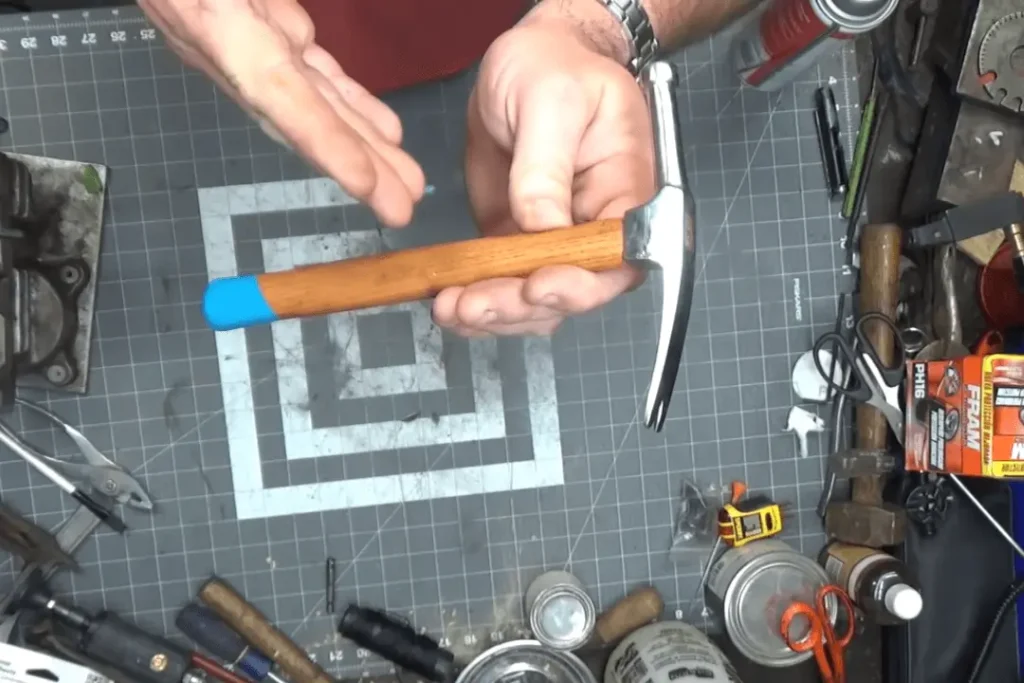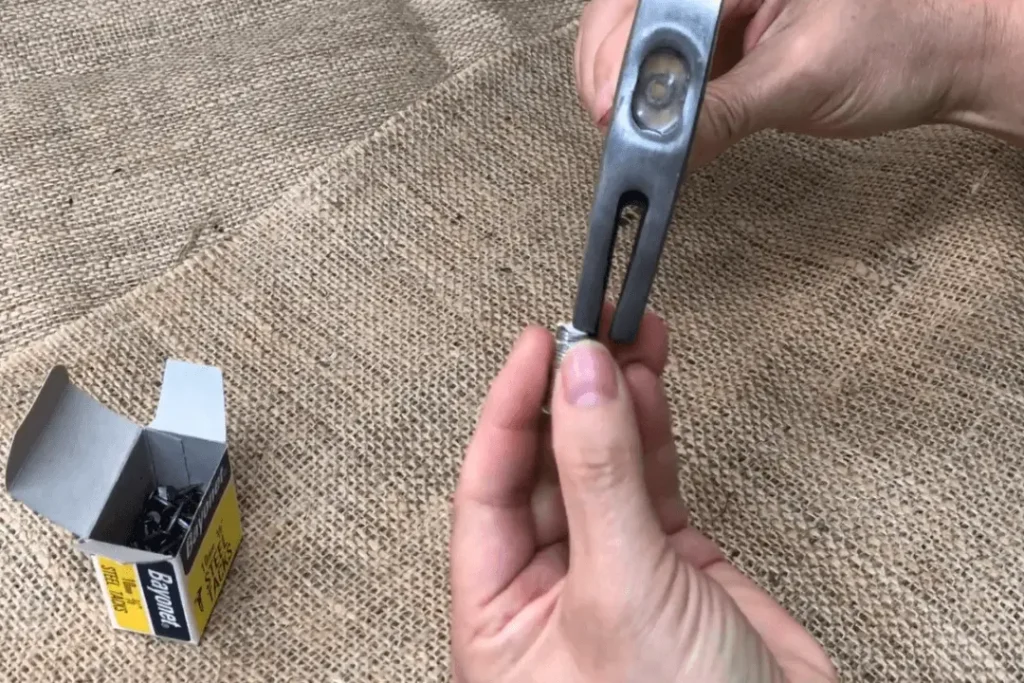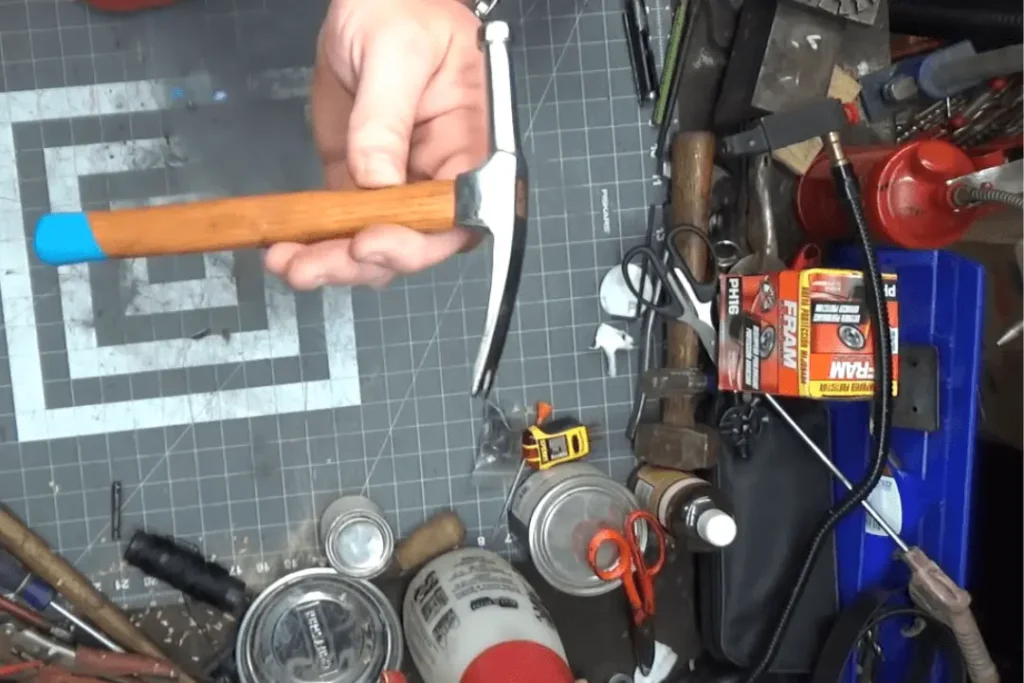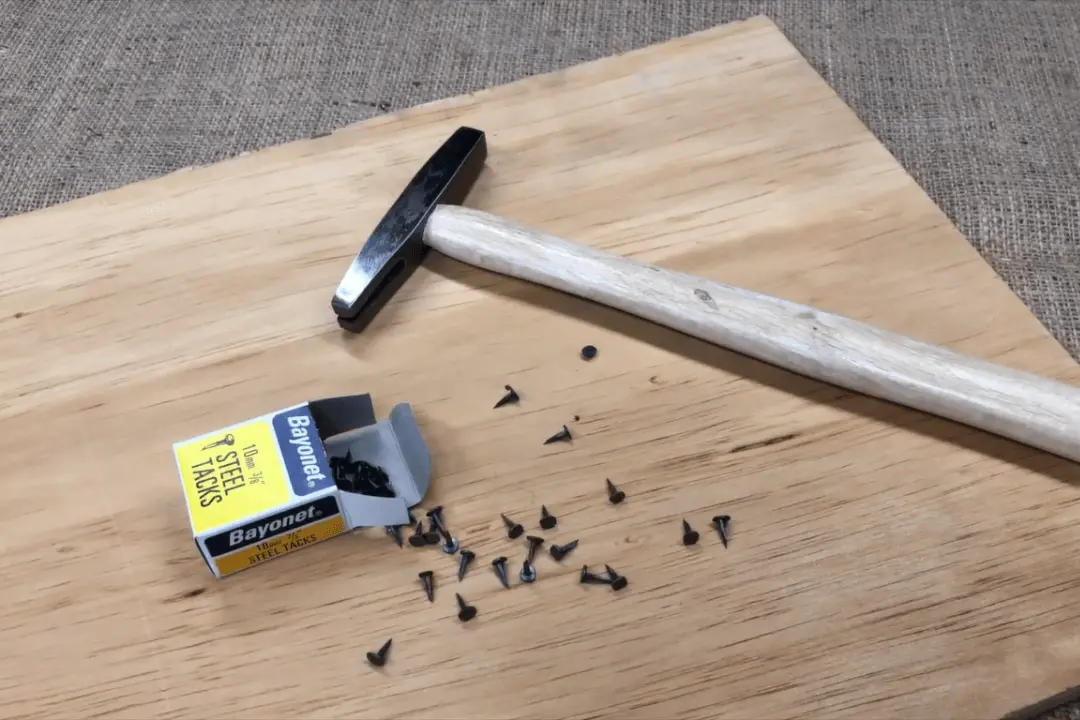How to Use a Tack Hammer Nail it Every Time
When it comes to precision hammering tasks, knowing how to use a tack hammer effectively can make all the difference in your woodworking and upholstery projects. Many beginners ask, “What is a tack hammer used for?” The answer lies in its specialised design for detailed work. This specialised tool, often overlooked in favour of its larger cousins, is essential for a delicate job that requires a gentle touch.
What is a Tack Hammer Used For?
Understanding what is a tack hammer used for is crucial for any craftsperson’s toolkit. A tack hammer, also known as an upholsterer’s hammer, has specific applications that make it invaluable:
- Upholstery Work
- Installing furniture tacks
- Securing fabric to frames
- Working with decorative nails
Many professionals who understand what the uses of tack hammer, prefer it over standard hammers for detailed work. Let’s explore the primary uses of how to use a tack hammer:
- Light Woodworking
- Setting small nails
- Working with delicate mouldings
- Precise nail placement
If you’re wondering what is a tack hammer used for in modern crafting, the applications extend to:
- Craft Projects
- Creating decorative pieces
- Working with small fasteners
- Detailed finishing work
Why is a Tack Hammer Split?
One of the most common questions is “Why is a tack hammer split?” The answer reveals the tool’s ingenious design. Understanding why is a tack hammer splits will help users maximise its effectiveness. The split head serves multiple purposes:
- Magnetization
- One side is typically magnetised
- Helps hold small tacks in place
- Enables precise placement
When examining why a tack hammer splits, consider these benefits:
- Dual Functionality
- One side for starting tacks
- Another side to driving them home
- Enhanced versatility
Many craftspeople ask why a tack hammer splits when first encountering the tool. The split design offers:
- Specialised Features
- Better control
- Reduced material damage
- Improved accuracy
Knowing why is a tack hammer splits helps users understand its unique advantages in precision work.
How to Remagnetize a Tack Hammer
Over time, magnetic properties may weaken, making it essential to know how to remagnetize a tack hammer. Here are several proven methods for how to remagnetize a tack hammer effectively:
- Using a Strong Magnet
- Stroke in one direction
- Repeat 20-30 times
- Test magnetization
Professionals often share tips on how to remagnetize a tack hammer using these methods:
- Electric Method
- Use battery and wire
- Create a temporary electromagnet
- Apply to Hammerhead
Understanding how to remagnetize a tack hammer ensures optimal performance:
- Professional Method
- Use a commercial magnetizer
- Follow manufacturer instructions
- Test regularly
For those wondering how to remagnetize a tack hammer at home, try this:
- Alternative Method
- Use existing strong magnets
- Apply consistent pressure
- Test frequently
Comparing Different Types of Tack Hammers
To help you understand how to use a tack hammer effectively, here’s a comprehensive comparison:
| Feature | Traditional Split-Head | Magnetic-Tip | Modern Composite |
| Weight | 4-6 oz | 5-7 oz | 3-5 oz |
| Head Material | Steel | Magnetised Steel | Steel/Composite |
| Handle Type | Wood | Wood/Composite | Ergonomic Grip |
| Best For | Traditional upholstery | Precision work | Extended use |
| Magnetization | One side | Full head | Varies |
| Price Range | $15-25 | $20-30 | $25-35 |
Unveiling the Tack Hammer: Anatomy of a Simple Tool

Before we dive into hammering techniques, let’s look at the anatomy of the Tackle Hammer. Contrary to its larger framing hammer, the tack hammer is an extremely compact and light tool that typically ranges between 6 and 10 inches long. Here’s a brief breakdown of its main elements (see the table for visual representation):
For More Interesting and Informative Articles Check out: smartoolbuddy
Anatomy of a Tack Hammer
The heavy part of the hammer is mostly made from cast iron or steel. It is available in two primary types There are two types: Magnetic Head It has a built-in magnet which allows you to quickly grasp and secure the tack in the right position before you begin hitting it. Non-Magnetic Head: This traditional head requires you to hold the tack by using either your fingertips or needle-nose pliers.
| Parts | Description |
| Head | This type has a built-in magnet that securely holds the tack in place before striking, ensuring accurate placement. |
| Claw | A V-shaped notch on the back of the head. It can be used to remove nails or tacks when needed. |
| Handle | The grip part of the hammer is typically constructed of plastic or wood. It must be easy to hold, and have the user with a solid grip. |
Choosing the Right Tack Hammer
Picking the best tack hammer will depend on your particular requirements and personal preferences. Here’s a quick guide:
- Magnetic vs. Non-Magnetic: If you’re a novice or have a tendency to slip your nails. A magnetic head can be a lifesaver.
- Hammer Size: Pick a size that you feel is comfortable in your palm and is suitable for the tack size you’ll use.
- Handle Materials: Choose a hammer that has a good handle and is shock-absorbing. Handles with rubberized grips offer more comfort.
Mastering the Art of the Hammer: Techniques for Tackling Tasks

Once you’ve mastered the tool’s capabilities, let’s look at some of the most important strategies for using your tack hammer efficiently:
- Safety first: Make sure you wear protective glasses in order to shield your eyes from debris that flies around.
- Setting the Tack: Here’s where the magnetic head shines! If you’re using a head with a magnet, just put the tack in contact with the magnetic surface, then place it on the desired surface. If you are using a non-magnetic head, use your fingers or needle-nose pliers to keep the tack in place.
- Grip and Stance: Keep the hammer in a secure position at the very end of the handle to allow for maximum control. Maintain a steady stance by keeping your feet shoulder-width apart and your dominant foot slightly to the side to ensure stability.
- Strike with precision: Aim for the highest point of the tack head using the control of a direct, precise strike. Be careful not to use too much force because this could bend the tack, or even harm the surface you’re striking into.
- Begin Light: Adjust Beginning with gentle taps to force the tack into a slight angle. Once you’re sure, apply more controlled, but slightly firmer strikes to push it in completely. It is better to employ multiple controlled taps rather than one powerful blow.
- The importance of Following Through After you have hit the tack, do not jerk your hands back abruptly. Instead, keep going with the swing to make sure, that the power is transferring to your tack.
- Pulling out the Tack (Optional): If you have to take off from a tack use the claw at the side of the head of the hammer. Put the claw in the tack head, and then gently pull it upwards.
Also Read: Ultimate Guide to the Best Roofing Hammer for Professionals In 2024
Beyond the Basics: Exploring Additional Uses for a Tack Hammer

While hammering tacks may be its principal function, the flexibility of the tack hammer goes to include:
- Upholstery Repair: Make use of the edges of your fabric with a hammer buttons, trim, and edges when working on upholstery projects.
- Framing Artwork: Small tacks are used to fix posters or artwork that is light to frames.
- 3Light Carpentry: Tack hammers are great for assembling small furniture pieces, or for attaching decorative trim.
- Opening Tight Lids: The claw is employed to open the lids of jars and containers.
Conclusion: The Mighty Tack Hammer – A Reliable Companion
A tack hammer, which is often ignored in favor of other tools that are more powerful is proven to be useful repeatedly. Its small dimensions and user-friendly design makes it an ideal companion to tackle any task. Also, a tack hammer is much better than a claw hammer.
A Tack hammers Frequently Asked Questions
Why is there a split in a tack hammer?
The split that you may find in tack hammers isn’t actually a split, it is the design element that goes with the magnet head. The split makes the horseshoe-shaped magnet form inside the head. This shape lets the magnet include both a north and south pole in the same part of the head, which allows it to secure the tack at the center and center of its magnetic surfaces.
Which slot is it used on a tack hammer?
The slot you’re speaking of is probably it’s the claw at one side of the head of the hammer. The V-shaped notch isn’t actually a split, but instead it is a tool that can be used to:
Pulling out Tacks or Nails: The claw can be placed between the heads of an tack or nail and then pulled upwards to release it.
How do you make a hammer more magnetic?
While some tack-hammers come with a built-in magnet traditional tack hammers don’t have this feature. However, permanent magnetizing a non-magnetic head is not an ideal solution to use for DIY. This hammer’s steel are not usually able to hold charges of magnetic force for a long time.
What is Spitting Tacks?
“Spitting tacks” is not a term that’s directly linked to the hammers used to make tacks. It’s a traditional technique employed for upholstery. It involves dropping the end that is magnetized of a ton hammer (or an upholstery hammer with a specialization) into a large jar of tacks. The magnet will pick up many tacks at a time. The upholsterer then chooses the tack they want to use their tongue and put it on the tip of the magnet prior to hammering the tack into furniture. This is not as common now, thanks to available precut upholstery tacks.
Also Read:
The Ultimate Guide To Roofing Hammers
The Stanley Anti-Vibe Roofing Hammer – A Comprehensive Detail


Related Blogs
The Top 10 Best Litter Box for Multiple Cats
5 Best Dry Cat Food for Indoor Cats 2024
Affordable Bluetooth Projector for Gaming: The Best in 2024
The Best Soundbar for Music and Movies for Home Threaters
Stay Powered Up: The Best Portable Charger for iPhone 15 in 2024
The iPhone 15 Pro Max New Features: Comprehensive Features
Liquid Screen Protector vs Tempered Glass: Which is better in 2024
What is a Monkey Wrench: Complete Details
Guide to Cleaning Your Gatorade Bottle The Proper Way
How To Sharpen Garden Hoe: Real Guide to the problem
Easy Ways on How to Clean Garden Tools at Home
Changing a Garden Cart Tire: Expert Hacks That Will Save You from $200+ in Repairs
How to Whisk Eggs: Easy Manual Techniques
Garden Fork Vs Pitchfork: Deciding Which Tool Will Meet Your Garden Needs
Conquering the Greens: How to Rake Artificial Grass
How Deep To Plant Daffodil Bulbs? A Simple Guide
How to Pick the Best Shovel for Digging in 2024
The best time to power rake your lawn
Why Your Kitchen Isn’t Complete Without an Acacia Cutting Board
How to Replace Trimmer Line in Bump Feed: Step-by-Step Guide
Perfect Make Matcha Without Whisk: The Ultimate Guide
10 Ways to Remove Snow from Driveway Without a Shovel: Innovative Snow Removal
The Ultimate Guide: How Many Wheelbarrows of Sand Per Bag of Cement
Don’t Make This Silly Mistake with Your 5 Uses of Garden Fork
Is a Spade and a Shovel the Same? Discover the Differences Here
Transform Your Garden with Stunning Garden Stake Ideas You’ll Love
The Best Home Gym Equipment you can get in 2024
The Best Home Gym Setups for Small Spaces
Shoot Like a Pro: The Best iPhone Filmmaking Kit
Are Bone Conduction Headphones Safe?
Revolutionize Your Visual Experience: Best Samsung CF39 Series in 2024